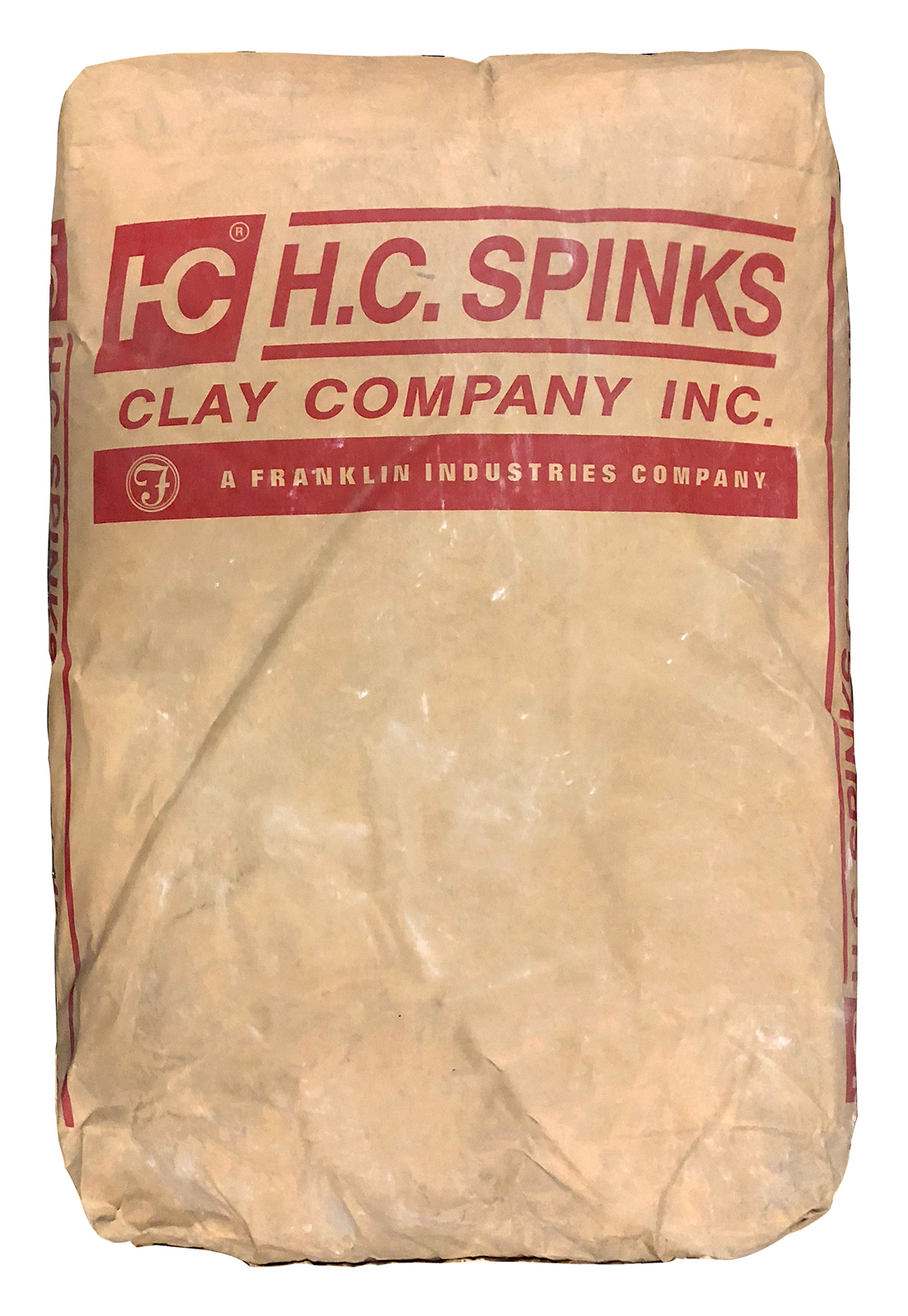| Monthly Tech-Tip | No tracking! No ads! | |
Foundry Hill Creme
Alternate Names: New Foundry Hill Creme, Foundry Hill Cream, Foundary Hill Cream
Description: Plastic clay for stoneware clay bodies
| Oxide | Analysis | Formula | Tolerance |
|---|---|---|---|
| CaO | 0.50% | 0.04 | |
| K2O | 0.70% | 0.04 | |
| MgO | 0.50% | 0.06 | |
| Na2O | 0.55% | 0.04 | |
| TiO2 | 0.50% | 0.03 | |
| Al2O3 | 20.50% | 1.00 | |
| P2O5 | 0.09% | - | |
| SiO2 | 66.20% | 5.48 | |
| Fe2O3 | 1.60% | 0.05 | |
| LOI | 8.20% | n/a | |
| SO3 | 0.09% | n/a | |
| Oxide Weight | 453.48 | ||
| Formula Weight | 494.47 | ||
Notes
Similar to a ball clay but having a much lower drying shrinkage (about 6-6.5%) and more iron (but a distinctly low TiO2). Although this is a fairly refractory clay, it has a high firing shrinkage, around 8% across the entire range from cone 7 to 11. Porosity drops slowly from cone 7 upward (7% down to 4% at cone 11 oxidation and 10 reduction). Used commonly in stoneware clay bodies.
The manufacturer states: An intermediate-grained engineered blend offering excellent moisture retention and plasticity properties. Ideally suited for a wide variety of stoneware applications and wet forming process.
Relative Viscosity (1.2 Sp. Gr.):* 1.28
Casting Rate: (gms per 15 min/426 cm2):* 209
Water of Plasticity:* 22.9
% Dry Shrinkage:* 3.94
Dry M.O.R., psi:* 239
Cone 04 8 11
----
Fired Shrinkage:* 0.2% 1.6% 1.9%
Absorption:* 20.2% 17.8% 15.2%
M.O.R. psi:* 758 2390 4630
Thermal Expansion, Cone 8: .493% at 700C
P.C.E.: 30
pH: 5.9
Oil Absorption: 28
Bulk Density, lbs per cubic foot: 37-45
Particle Size, Microns: 20 10 5 2 1 0.5 0.2
88% 73% 60% 44% 33% 21% 8%
*Specimens: De-aired, extruded, 50% ball clay, 50% flint
Related Information
Original Container bag of Foundry Hill Cream clay

This picture has its own page with more detail, click here to see it.
Foundry Hill Creme fired test bars

This picture has its own page with more detail, click here to see it.
Top: Cone 10R (soluble salts are staining the surface). Downward: Cone 11-7 oxidation.
These look very similar to a typical ball clay, perhaps not firing quite as white.
In clay body testing it is about the data.
It reveals how a 20% feldspar addition affects this clay

This picture has its own page with more detail, click here to see it.
Foundry Hill Creme (FHC) is used in North America as a stoneware body base or addition. It fires like a ball clay but it is less plastic. How much feldspar would it take to make it into a vitreous cone 6 stoneware? We fired SHAB test bars from cone 4 to 10 (bottom to top) and 10R (the soluble salts discolor it in reduction). The data collected (in our Insight-live.com group account) produces firing shrinkage and absorption data that calculates to the red columns (and plots to the blue lines). Notice how the porosity drops steadily from cone 3 to 10 (the firing shrinkage rises steadily over the same period). A 20% nepheline syenite addition plots to the orange lines. Notice 2200F (cone 6): The porosity drops from 8% to vitreous (zero) while the firing shrinkage increases 2%. The FHC drying shrinkage (the first DSHR red column) averages 0.3% lower than the mix, this is counterintuitive but a pleasant surprise. While the mix did have a higher water content (which would increase drying shrinkage) another factor appears to be how well this clay hosts the feldspar addition without compromising its own plasticity.
Links
| Typecodes |
Clay Other
Clays that are not kaolins, ball clays or bentonites. For example, stoneware clays are mixtures of all of the above plus quartz, feldspar, mica and other minerals. There are also many clays that have high plasticity like bentonite but are much different mineralogically. |
| Materials |
Gleason Ball Clay
|
Data
| Pyrometric Cone Equivalent | 31 |
|---|
| By Tony Hansen Follow me on        |  |
Got a Question?
Buy me a coffee and we can talk

https://digitalfire.com, All Rights Reserved
Privacy Policy
